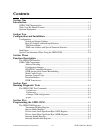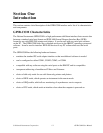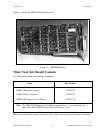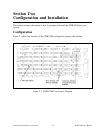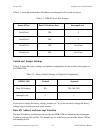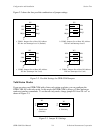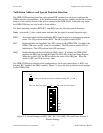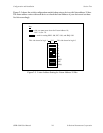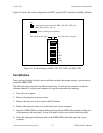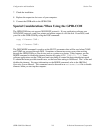Configuration and Installation Section Two
GPIB-COM User Manual 2-2 © National Instruments Corporation
When installing the GPIB-COM you must determine which serial port the GPIB-COM board will
respond to and select the appropriate base address and interrupt level. The GPIB-COM can be
configured to one of four base addresses:
• 3F8 for Serial Port 1
• 2F8 for Serial Port 2
• 3E8 for Serial Port 3
• 2E8 for Serial Port 4
Note: DOS and BIOS only recognize base addresses 3F8 and 2F8.
The GPIB-COM is shipped from the factory set to 3F8. It must be reconfigured to another base
address if another device (such as a printer adapter card or a built-in serial port) is already at that
address.
DOS has reserved device names for the serial ports it finds in the system: COM1 and COM2.
The serial port adapters are named in the order in which they are found. When the computer is
powered on, DOS searches the serial port addresses for installed adapters. It first searches 3F8,
then 2F8. If only one device is installed, that device is named COM1 regardless of what its I/O
address is. If there is more than one serial device installed, the first one found is assigned COM1
and the second one found is assigned COM2.
Some communications software also recognizes COM3 (base address 3E8) and COM4 (base
address 2E8). If you wish to use COM3 or COM4, set the jumpers to the desired base address as
shown in Figure 2-2. DOS and BIOS do not recognize COM3 or COM4. Consult your software
documentation to see which interrupt level, if any, is required. If interrupts are not used, the
jumper can be removed or stored with only one side on a pin.
The GPIB-COM may need to be reconfigured if its interrupt level conflicts with another device. If
the base I/O address of the GPIB-COM does not conflict with any other device in your computer
and the GPIB-COM still does not work with your software package, reconfigure the GPIB-COM
to a different interrupt level.




